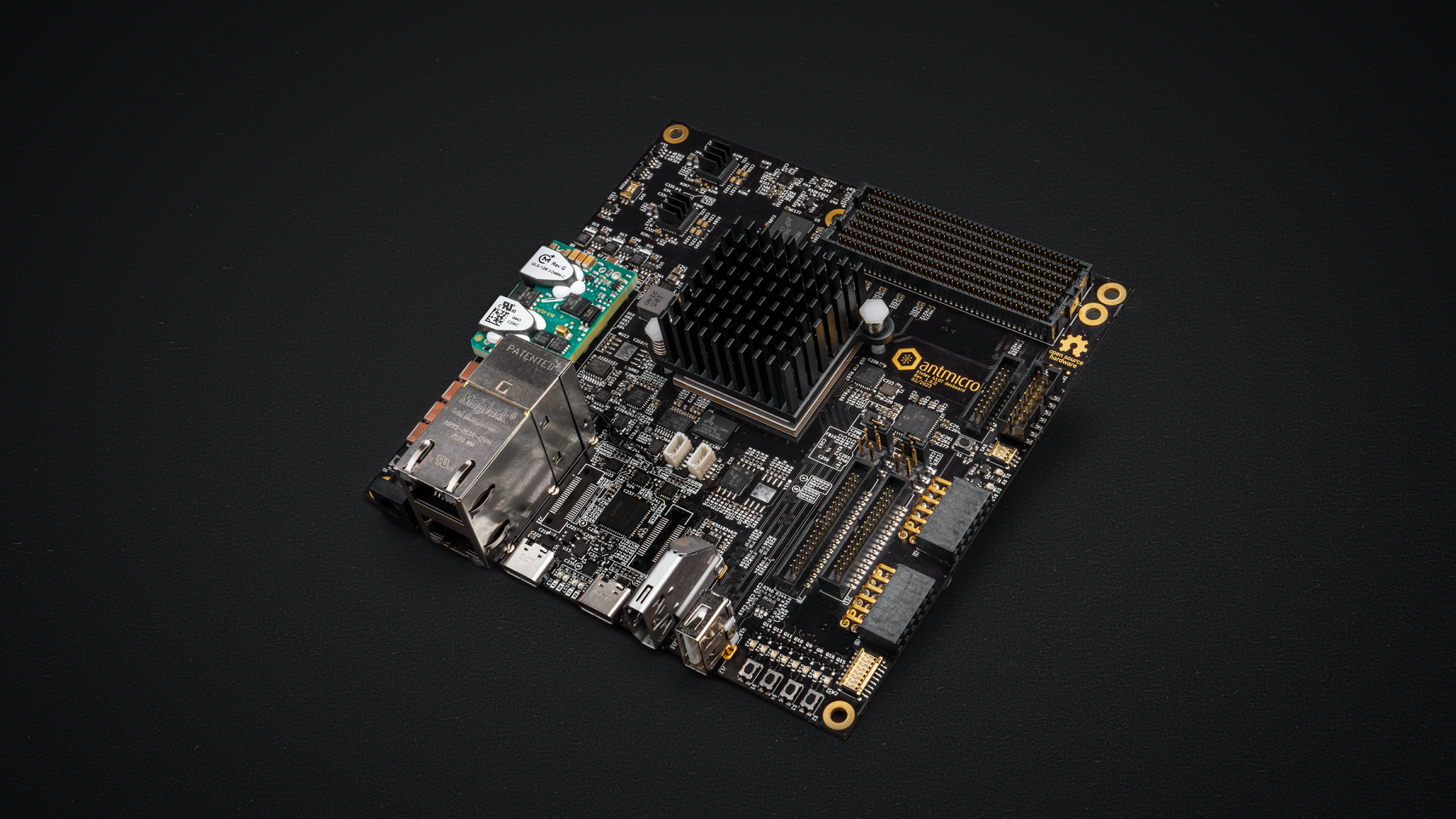Open hardware Xilinx Kintex K410T development board for ASIC prototyping with RISC-V and OpenTitan
Published:
Topics: Open hardware, Open FPGA
Antmicro helps its customers build complex FPGA and ASIC RISC-V systems based on open source building blocks such as those provided by the OpenTitan Root of Trust project. The AMD-Xilinx Kintex-7 is a relatively inexpensive and obtainable commodity FPGA family which makes it an excellent prototyping and research platform that is possible to replicate at scale.
For that reason it is used in many of our open source hardware FPGA designs such as the open hardware Data Center RDIMM DDR4 Tester and the most recent DDR5 Tester.
As it happens, for their default Earl Grey SoC design the OpenTitan project has also been using a Kintex-7 K410T based FPGA platform. The board is, however, a custom, proprietary design which is hard to come by or replicate. Since Antmicro is using OpenTitan as a template for extending the open source SystemVerilog toolchain, to make it easier reproduce the entire design as-is (as an alternative to cutting it down to fit in more approachable hardware) we designed a versatile open hardware Kintex-7 K410T development board. This blog note will introduce the board and describe its potential as an RTL prototyping platform.

Open hardware Kintex-7 K410T development board
Antmicro’s Kintex K410T development board implements one of the biggest Xilinx Kintex-7 FPGAs, with additional external peripheral ICs and I/O connectors for fast-turnaround prototyping via expansion boards. The FPGA provides 400K logic cells in a 900-pin package, I/Os divided into 7 high range and 3 high performance banks, and 16 Gigabit transceivers operating at 12.5Gb/s.
The 10-layer PCB has a compact size of a nano-ITX board (120x120mm) and can be powered (with redundancy) from multiple sources:
- regular DC power Jack
- 40W PoE++ on Gigabit Ethernet connector (and optionally also on the 10/100 MBit Ethernet connector) - useful for operating on the board remotely using a single cable,
- 45W USB-C Power Delivery available on debug USB-C connector, allowing simultaneous powering and debugging.
The board implements multiple on-board memories, providing 512MB of DDR3L, 1MB of SRAM and 32MB of (Q)SPI flash. The memory can be extended with two optional (Q)SPI flash chips (in WSON8x6 or WSON6x5 packages) and a microSD card.
Antmicro’s Kintex K410T development board provides the ability to synthesize custom RISC-V based processing platforms, which can use the typical I/Os exposed on board, including the industry standard FMC connector, providing PCIe x8 on 12.5Gb/s transceivers and 50 I/Os, consisting of 24 length matched differential pairs and 2 single lanes, all in 3.3V domain. More user I/Os are available on two PMOD connectors and two 1.27mm pitch connectors, mapped to two FPGA High Range banks, allowing the user to manually pick the voltage domain on each connector (bank) with configuration jumpers.
The board also features a video output exposed on the HDMI connector. Ethernet connectivity is provided on dual RJ45 connectors exposing 10/100 Mbit and 10/100/1000 Mbit transceivers. The board also exposes a USB-A 2.0 full speed host and USB-C 2.0 full speed host/device (selectable) interfaces. The second USB-C provides debugging capabilities through an FTDI FT4232H chip that exposes JTAG, I2C, SPI and UARTs interfaces, as well as a power supply using an STUSB4500 for a USB-C PD 45W sink. The board also includes 8 indicator LEDs and multiple user inputs from 4 push buttons and 8 dip switches.
ASIC prototyping with OpenTitan
As mentioned earlier, Antmicro’s Kintex K410T development board was originally designed with the OpenTitan project and our continuous work on open source SystemVerilog tools in mind, described in more detail in a recent blog note. With the numerous building blocks that are incorporated in the project - you can see them nicely outlined on the interactive diagram at the main page of OpenTitan’s documentation, the main OpenTitan configuration, called Earl Grey, doesn’t fit in an FPGA smaller than the Kintex K410T.
The open hardware Kintex K410T development provides a useful set of I/Os helpful for a variety of ASIC prototyping scenarios. This includes hardware-in-the-loop testing of designs with multiple IP cores and peripherals, such as OpenTitan and variants thereof. The board’s FMC connector and dedicated adapters allow multi-channel data acquisition, making it suitable for fast-turnaround prototyping of multi-channel data acquisition systems. The platform will also be useful as part of the custom runners CI infrastructure we have been developing for heavy ASIC-related CI workloads.
Versatile ASIC prototyping services with open hardware platforms
A versatile yet affordable open hardware platform, the Kintex K410T board can be used in the ASIC prototyping or other contexts, for building RISC-V SoCs which use OpenTitan or other open source RTL blocks we work with. Antmicro can assist you with building advanced ASIC solutions, starting from a Proof-of-Concept up to the product phase, both in terms of RTL development, tools and platforms. If you would like to use our services in your next ASIC development project, reach out to us at contact@antmicro.com.

